#monumental sculpture
Text
The Great Sphinx of Giza through the Decades:

1849 after uncovering of the chest area (tl).
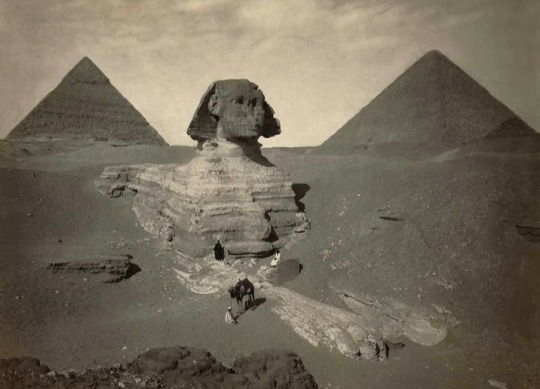
1878 in partially excavated condition (tr).

1925 during extensive excavations & repairs (bl).

1931 with dismantled Roman stairway (br).
NOTE:
The Great Sphinx of Giza is a limestone statue of a reclining sphinx, a mythical creature with the head of a human and the body of a lion.
Facing directly from west to east, it stands on the Giza Plateau on the west bank of the Nile in Giza, Egypt.
The face of the Sphinx appears to represent the pharaoh Khafre.
146 notes
·
View notes
Photo

Today’s Flickr photo with the most hits: a monumental kouros figure, Archaeological Museum of Samos.
111 notes
·
View notes
Photo

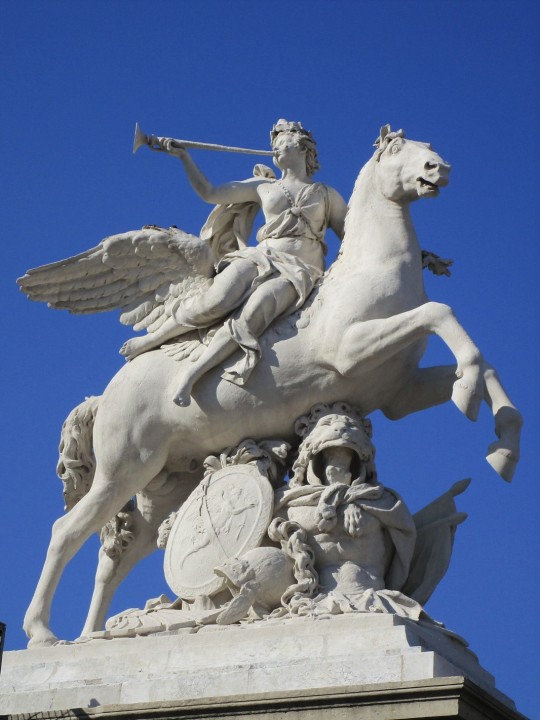
Mercury Riding Pegasus and Fame Riding Pegasus - copies of the original works completed in 1702 by Antoine Coysevox for the Château de Marly, later moved to the Tuileries Palace, and now in the Louvre. These copies flank the west entrance to the Jardin des Tuileries.
Photos by Charles Reeza
#allegorical sculpture#mythology#18th century art#marble sculpture#Paris#public art#public park#monumental sculpture#equestrian statue
47 notes
·
View notes
Text
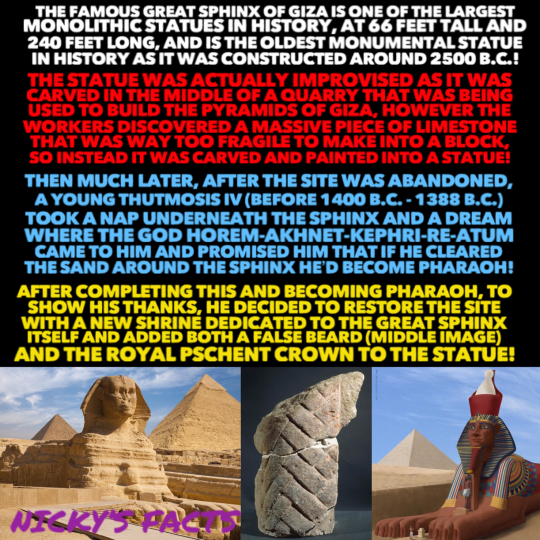
All hail the Great Sphinx of Giza!
𓃭
#history#great sphinx of giza#ancient egypt#monument#art history#monolithic statue#great sphinx#ancient egyptian history#giza necropolis#wonder of the world#pharoah#ancient#royalty#ancient history#monumental sculpture#statue#ancient art#thutmosis iv#old kingdom#new kingdom#ancient egyptian art#false beard#pschent crown#landmark#egyptology#world wonder#nickys facts
4 notes
·
View notes
Text
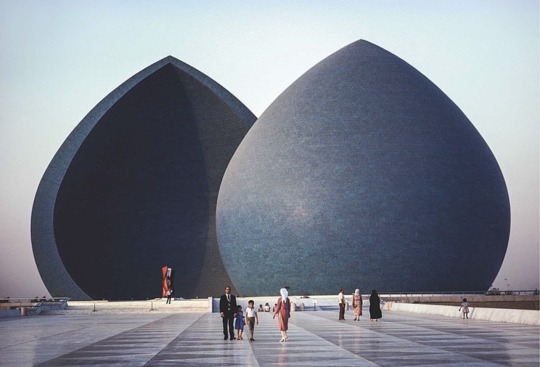
Al-Shaheed Monument, Baghdad (1983) Designed By: Ismail Fatah Al Turk
2K notes
·
View notes
Text

Saint George and the Rescued Maiden by Henry Charles Fehr
#st george#saint george#knight#maiden#damsel#art#henry charles fehr#knights#sword#armour#medieval#middle ages#england#english#britain#british#chivalry#chivalric romance#sculptor#sculpture#statue#christian#christianity#romantic#romanticism#europe#european#monument#photograph#photography
668 notes
·
View notes
Text

#toomasaltnurme#sculpture#monumental sculpture#installationart#art#toomasaltnurmeart#statue#painting#noaa#earth sciences
0 notes
Text

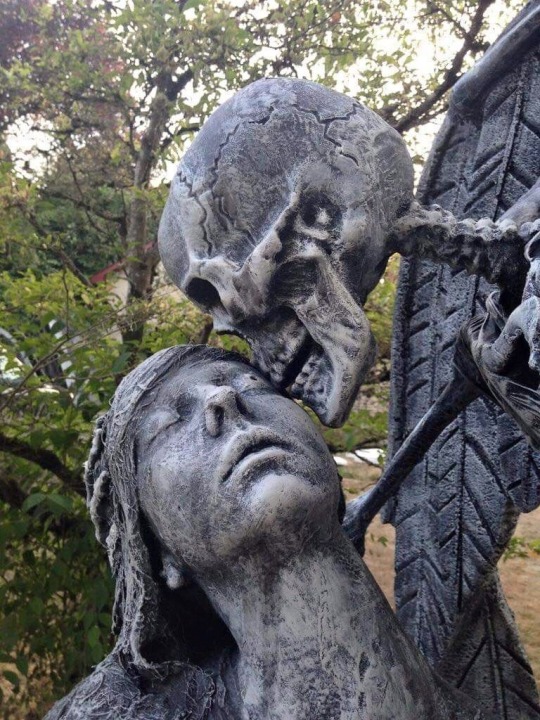
Kiss of Death Monument
#dark academia#light academia#classical#academia aesthetic#escapism#academia#books and libraries#classic literature#books#architecture#statue#sculpture#monument#kiss of death#gothic#royal core#cottage core#aesthetic#academic#mood#vibe#tumblr
2K notes
·
View notes
Photo
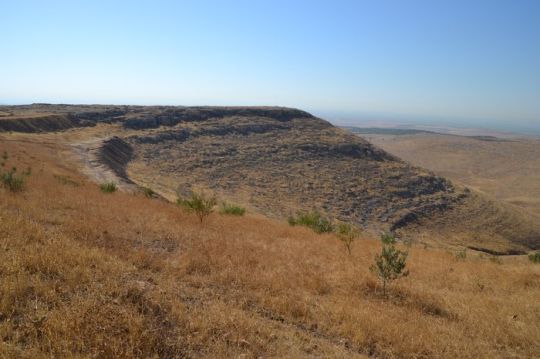
Monumental sculpture
In aspect, planning, architecture and art, the cities of Moesia and Thrace were no different from those of the eastern Hellenistic provinces. Monumental sculpture, which was, in general, a form of art alien to the Thracians, became widespread towards the end of the 2nd century A. D. Excavations in towns and settlements constantly reveal pedestals of statues, and the statues themselves; they represent various deities both of the Graeco-Roman pantheon and of the cults of other countries and peoples, which invaded and rapidly spread throughout the two provinces, displacing the local Thracian cults to a large extent. One of the largest statues ever found, probably of Demeter,. 2.83 m. in height without its pedestal, came to light at Oescus years ago. The head and arms are lacking; they had been separately made and’ attached to the trunk.
The sculptor had treated the draperies of its clothing with great skill and lightness, not only clearly stressing the difference in the material of chiton and cloak, but also successfully modelling the forms of the body beneath its garments. The works of. the old Greek masters of the classical period of Greek art were particularly highly prized by the cities of Thrace and Moesia. A very fine copy of Praxiteles’s Eros came from Nicopolis ad Istrum. From the Roman camp at the village of Riben, Pleven district, comes a somewhat fragmentary copy of the statue of the Resting Satyr, also by Praxiteles guided istanbul tours. In the sphere of sculpture here too, as in the other Roman provinces, portrait sculpture developed extensively. It followed, on general lines, the development of this art in Rome and Italy. But here too certain nuances of provincial art are noticeable.
Roman busts
The museums of Bulgaria abound in Roman busts — portrait busts of the Emperors, which ornamented the public places and squares, portrait busts of eminent citizens, to whom statues were erected at the decision of the municipalities in gratitude for the services they had rendered their native cities. And lastly portrait sculpture was extensively used on the tombs. Among the numerous works of this nature the head of Gordian III (238—244), row in the Sofia Museum, deserves mention; it belonged to a bronze statue of this emperor, which stood in Niccpolis ad Istrum.
However, together with the great master sculptors, who worked in the workshops of the cities in the style of the official Roman-Hellenistic art, and whose vast output barely managed to satisfy the great needs of construction in the Roman cities, the workshops of the local masters were at work no less intensively in the villages around the local shrines; they had to satisfy the religious needs of the masses in connexion with the rites of the local cults and the cult of the dead.
The custom of consecrating stone tablets or statuettes with the images of the gods worshipped in the small village shrines, or of putting up monuments on tombs with symbolical imagery connected with the activity of the deceased, had penetrated the widest socialstrata under the influence of the Roman and Hellenistic religion. In the conventional images of the gods of the Roman and Greek pantheon, the Thracian population continued to worship its local gods with their specific Thracian names, among which the cult of the «Thracian Horseman» was particularly widespread. Thousands of votive tablets are preserved in the Bulgarian museums upon which the whole scale of the Thracians’ religion in this period is depicted.
0 notes
Text

Olmec colossal head exhibited at the Hotel Nacional, Havana, 1974. From the Budapest Municipal Photography Company archive.
2K notes
·
View notes
Photo

Monumental sculpture
In aspect, planning, architecture and art, the cities of Moesia and Thrace were no different from those of the eastern Hellenistic provinces. Monumental sculpture, which was, in general, a form of art alien to the Thracians, became widespread towards the end of the 2nd century A. D. Excavations in towns and settlements constantly reveal pedestals of statues, and the statues themselves; they represent various deities both of the Graeco-Roman pantheon and of the cults of other countries and peoples, which invaded and rapidly spread throughout the two provinces, displacing the local Thracian cults to a large extent. One of the largest statues ever found, probably of Demeter,. 2.83 m. in height without its pedestal, came to light at Oescus years ago. The head and arms are lacking; they had been separately made and’ attached to the trunk.
The sculptor had treated the draperies of its clothing with great skill and lightness, not only clearly stressing the difference in the material of chiton and cloak, but also successfully modelling the forms of the body beneath its garments. The works of. the old Greek masters of the classical period of Greek art were particularly highly prized by the cities of Thrace and Moesia. A very fine copy of Praxiteles’s Eros came from Nicopolis ad Istrum. From the Roman camp at the village of Riben, Pleven district, comes a somewhat fragmentary copy of the statue of the Resting Satyr, also by Praxiteles guided istanbul tours. In the sphere of sculpture here too, as in the other Roman provinces, portrait sculpture developed extensively. It followed, on general lines, the development of this art in Rome and Italy. But here too certain nuances of provincial art are noticeable.
Roman busts
The museums of Bulgaria abound in Roman busts — portrait busts of the Emperors, which ornamented the public places and squares, portrait busts of eminent citizens, to whom statues were erected at the decision of the municipalities in gratitude for the services they had rendered their native cities. And lastly portrait sculpture was extensively used on the tombs. Among the numerous works of this nature the head of Gordian III (238—244), row in the Sofia Museum, deserves mention; it belonged to a bronze statue of this emperor, which stood in Niccpolis ad Istrum.
However, together with the great master sculptors, who worked in the workshops of the cities in the style of the official Roman-Hellenistic art, and whose vast output barely managed to satisfy the great needs of construction in the Roman cities, the workshops of the local masters were at work no less intensively in the villages around the local shrines; they had to satisfy the religious needs of the masses in connexion with the rites of the local cults and the cult of the dead.
The custom of consecrating stone tablets or statuettes with the images of the gods worshipped in the small village shrines, or of putting up monuments on tombs with symbolical imagery connected with the activity of the deceased, had penetrated the widest socialstrata under the influence of the Roman and Hellenistic religion. In the conventional images of the gods of the Roman and Greek pantheon, the Thracian population continued to worship its local gods with their specific Thracian names, among which the cult of the «Thracian Horseman» was particularly widespread. Thousands of votive tablets are preserved in the Bulgarian museums upon which the whole scale of the Thracians’ religion in this period is depicted.
0 notes
Text
0 notes
Text
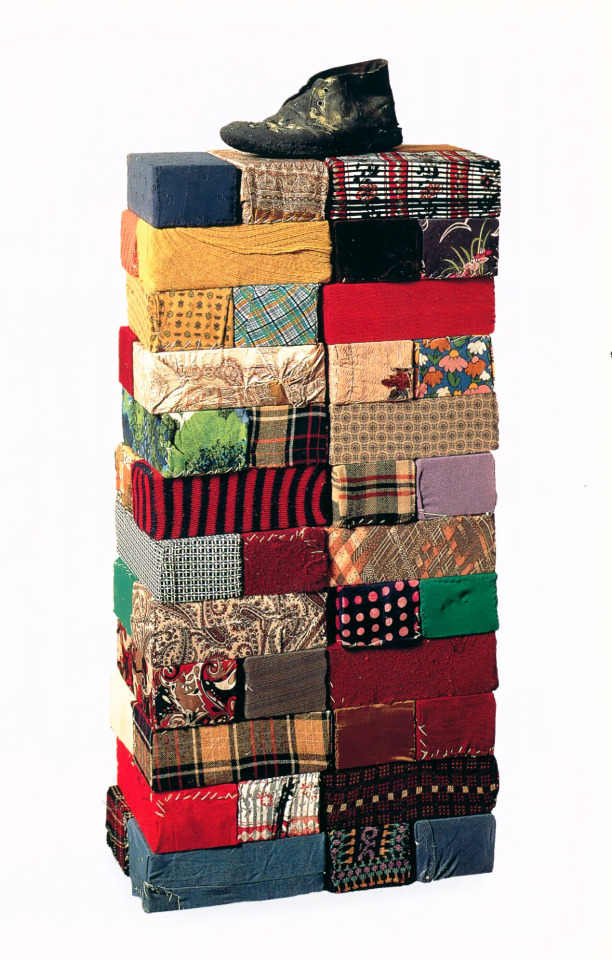
Michelangelo Pistoletto, Small Monument, 1968
516 notes
·
View notes
Text
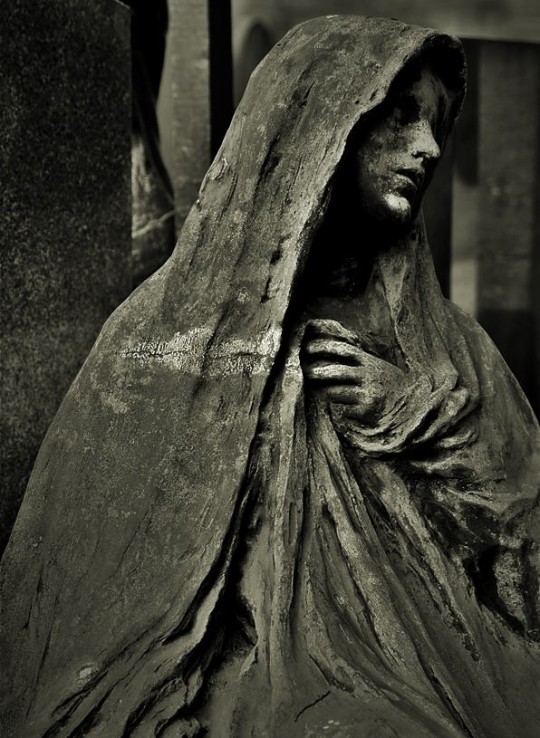
#art#sculpture#cemetary#monument#graveyard#black and white photography#sic transit gloriæ mvndi#sic transit gloria mvndi
448 notes
·
View notes
Text
193 notes
·
View notes
Text
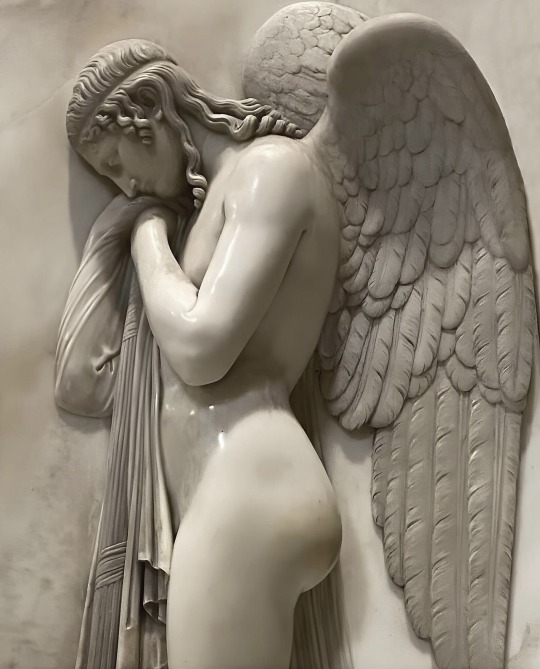
Antonio Canova: Monument to the Royal Stuarts (1819)
#Antonio Canova#Monument to the Royal Stuarts#art#sculpture#statue#white#body#angel#angel wings#1819
474 notes
·
View notes